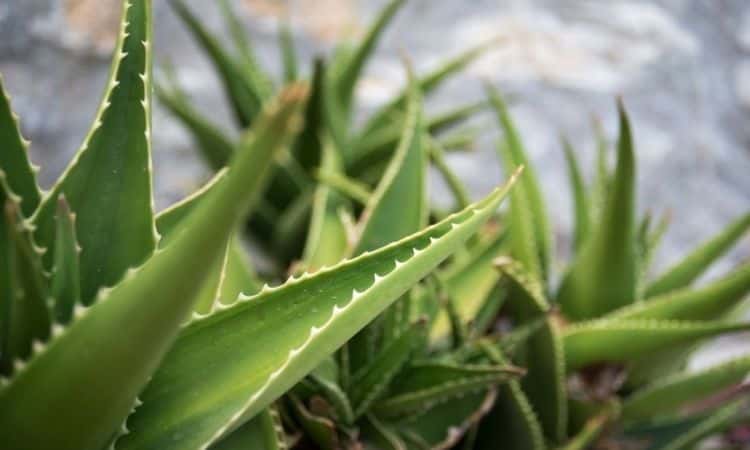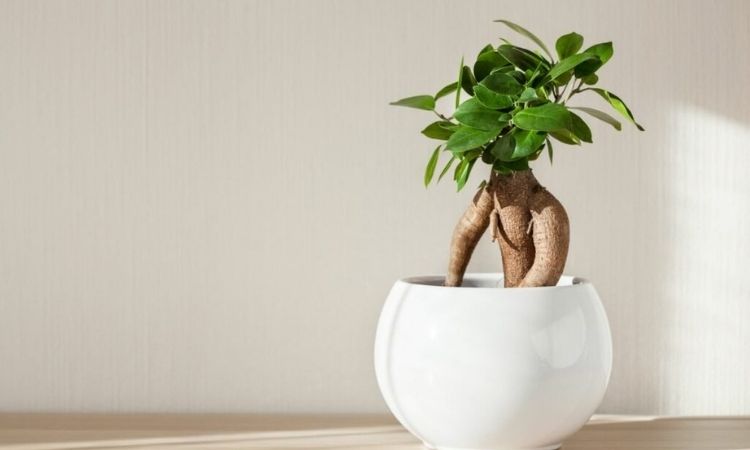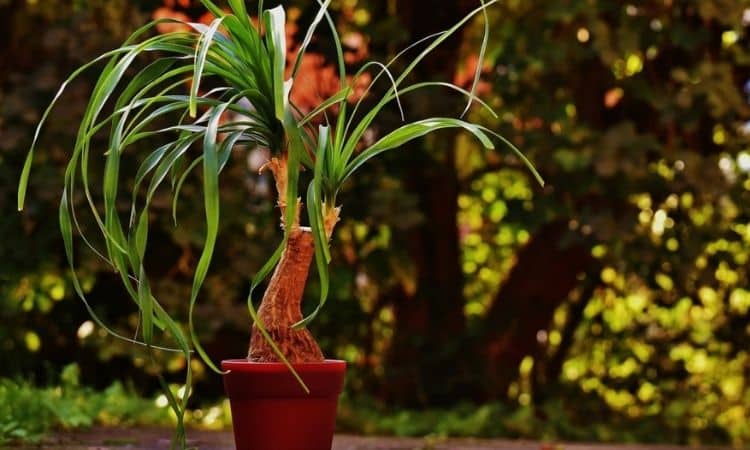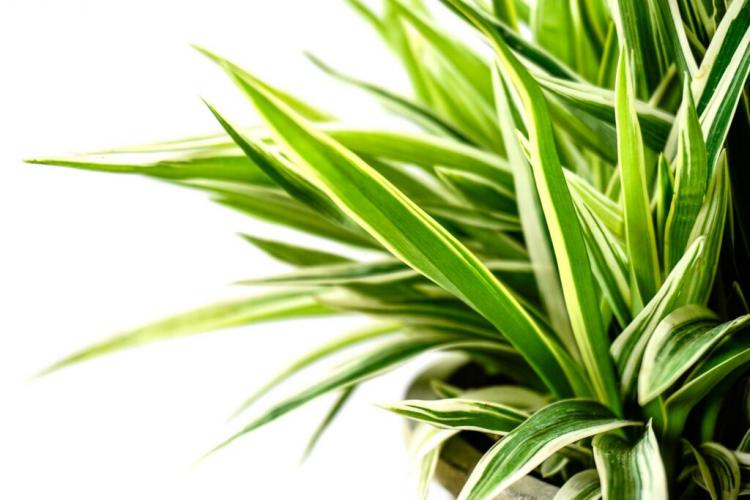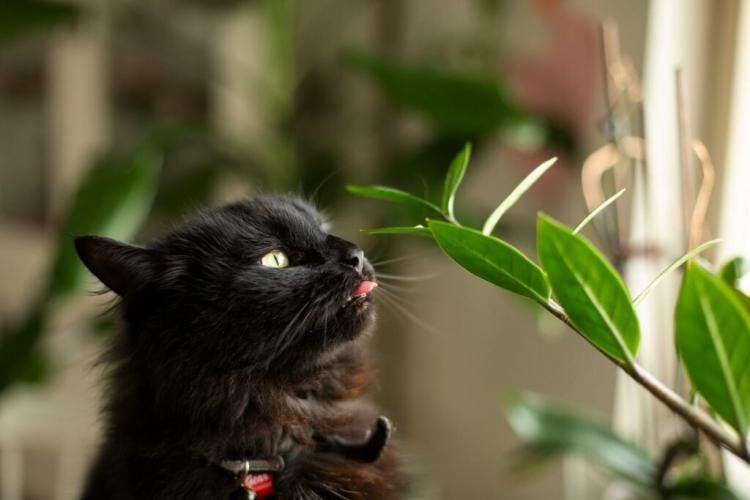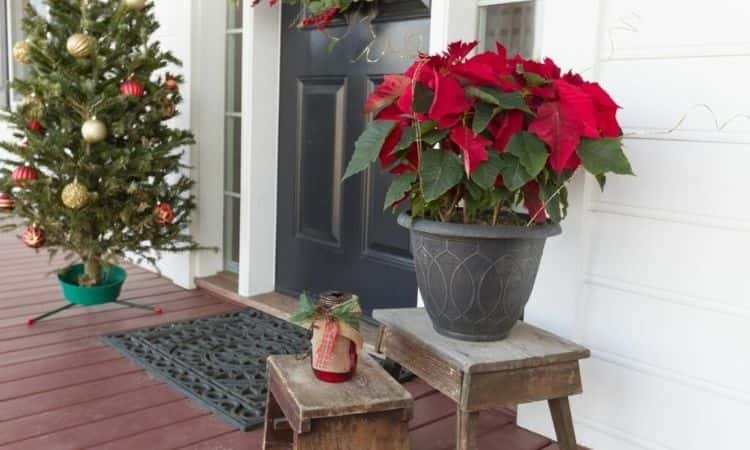Care For An Aloe Vera Plant: Planting and Health Benefits
True aloe (Aloe vera) convinces with its healing properties and is a decorative houseplant. So you can plant the aloe vera and propagate it yourself. The real aloe (Aloe vera) has now found its way into many households. It is not only a decorative evergreen succulent, but can also be used as a remedy for skin conditions. In this article, you will learn how to plant, propagate, and use aloe vera.
Aloe vera: origin and properties
Table of Contents
Aloe vera (la vera lat. = “the true”), also known as true or real aloe, originally comes from the Arabian Peninsula and today also enjoys great popularity in the USA. The name Aloe barbadensis is a synonymous species name of the true aloe, which is also valid. It belongs to the genus of aloes (Aloe) and is thus part of the grass family (Xanthorrhoeaceae).
The plant has been known since ancient times for its healing properties, which can provide relief, especially for skin conditions. Its peculiar appearance and undemanding nature also ensure that aloe vera is often kept as a houseplant.
Even though the aloe vera is often mistaken for a cactus, it is actually a succulent. It usually grows completely stemless or on a short false stem. Aloe vera forms rosette-like leaves that grow to about 12 to 16 in. long and 2.3 to 2.7 in. wide at the base of the leaf before tapering to a point.
They are usually juicy green or gray-green in color and have conspicuous, firm teeth along the edge. From the third year, Aloe vera can flower under good conditions. For this purpose, it forms a single, rarely a two- or three-branched inflorescence that can grow 23.6 to 35.4 in. high. The flowers are arranged in a cylindrical raceme 7.8 to 11.8 in. long, tapering towards the top.
In addition, the yellow, red, or orange aloe vera flowers have a short flower stalk and prominent stamens and pistils protruding from the top. There are a variety of Aloe species, in our special article, you will find an overview of the most beautiful Aloe species.
The danger of confusing the Aloe vera: At first glance, the Aloe vera can be confused with the similar-looking Agave. However, a closer look reveals some differences: inside, the leaves of the aloe vera are gel-like, while those of the agave are fibrous.
Agave is used for fiber – some species also for making agave syrup or tequila. Most species of agave contain skin-irritating and slightly toxic substances; they should not come into contact with the skin. Aloe vera, on the other hand, is considered a special remedy for the skin. In addition, the agave is hardy up to -68 °F, while the aloe vera does not tolerate frost.
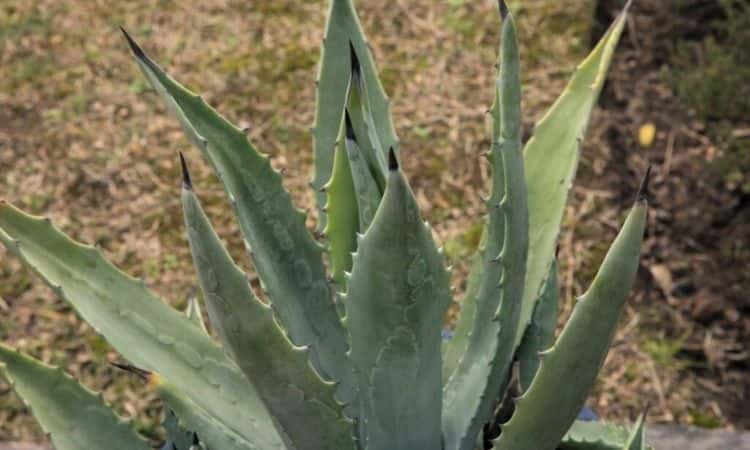
Planting aloe vera
Aloe vera is a low-maintenance plant and it is usually easy to cultivate. We explain which soil is particularly suitable for the aloe vera, what to consider when choosing a location, and how to properly care for the aloe vera.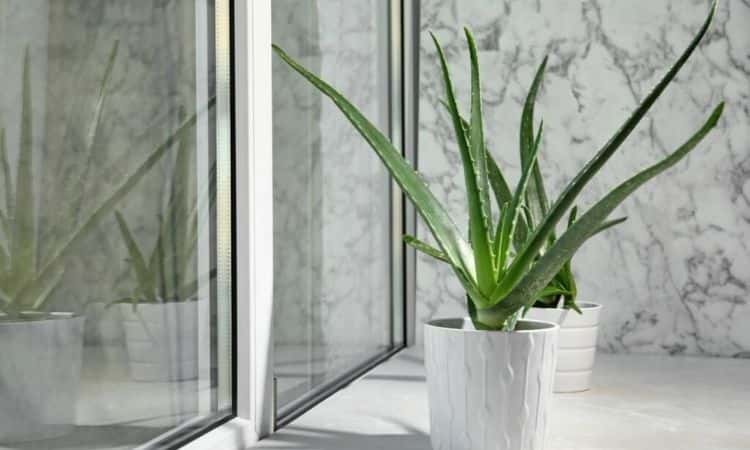
The right location for the aloe vera
Due to its original home, the aloe vera is a true sun worshipper that loves a warm, full-sun location. As a houseplant, the aloe vera is very suitable if you offer it the right location. Because of its high demand for sunlight, a place by a south-facing window or in a conservatory is perfect.
Warm temperatures of 68 to 77 °F are ideal for the aloe vera. Darker locations are also tolerated by the Aloe vera, but it grows much slower here shows a less vibrant green.
In the garden, the plant is difficult to cultivate, because the aloe vera does not tolerate temperatures below 41 ° F. It is, therefore, best grown in containers. Therefore, it is best planted in a container and brought indoors in the summer. In the spring, around mid-May, the plant can move from its winter quarters to a sunny place outdoors, as long as there is no longer any danger of late frosts.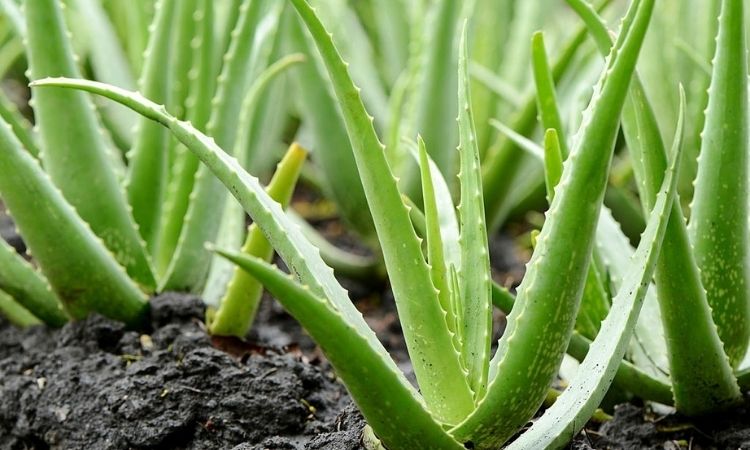
One should accustom the plant only slowly to a new location – if it is placed directly from its winter quarters into the blazing sun, sunburn can occur on the leaves. If temperatures drop again in September, the plant should be returned to its winter quarters. A bright room with mild temperatures of a maximum of 59 °F is suitable for this. The winter garden, the staircase or unheated living rooms are very suitable for this.
What soil is suitable for aloe vera?
Aloe vera has special requirements not only for its location but also for its soil: the soil for growing the plant should be mineral, nutrient-rich and at the same time low in humus.
However, satisfactory growth can still be observed in normal potting soil, but here it should be repotted more frequently. It is particularly important that the soil is well permeable to avoid waterlogging and associated diseases.
A cactus or succulent soil is best suited as a substrate, as it meets the conditions of the aloe well. Alternatively, a high-quality indoor plant soil can be made by yourself with sand, primary rock flour, and expanded clay quarry. Through high-quality soil, the plant is supplied with nutrients in the best possible way, so that it can grow healthily.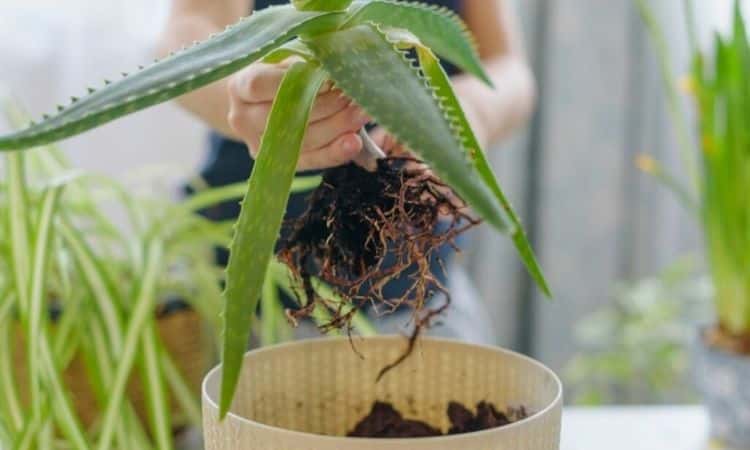
At the same time, the addition of sand ensures good aeration and water permeability, which is important for succulents. Primary rock flour and expanded clay fraction additionally enhance the soil – they give the soil more structure and stability, so the soil does not collapse as quickly.
Planting aloe vera
Planting aloe vera is simple and almost always successful. This requires a pot suitable for the size of the plant. Some expanded clay can then be added to the bottom of the pot to create good drainage and thus protect against waterlogging.
The aloe vera can then be placed in the pot and the roots covered with soil. Again, a cactus and succulent soil or alternatively a homemade cactus soil are suitable here. The soil should be lightly pressed and well-watered.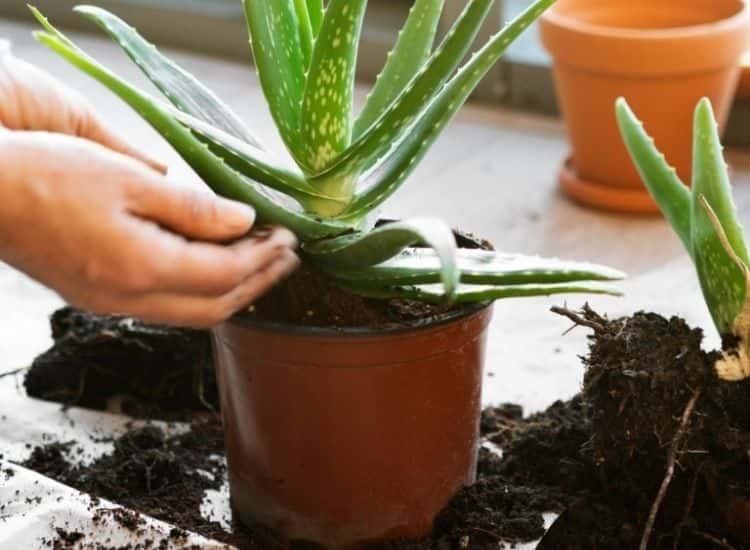
Finally, the Aloe vera can be brought to its preferably sunny, warm location. Already after a few weeks, the roots have grown. How to properly water, fertilize, and prune the aloe vera, you can read in our special article on aloe vera multiply in water.
Propagating aloe vera
Propagating aloe vera is versatile and child’s play; it usually does it on its own via offshoots. But propagation via seeds or leaf cuttings is also possible with aloe vera.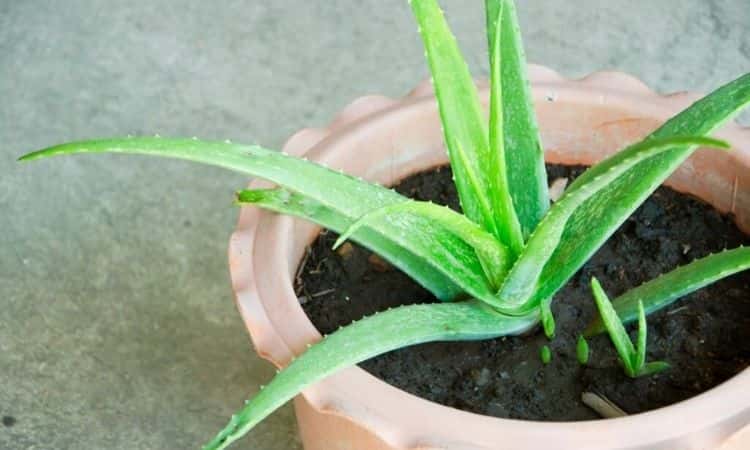
Pull aloe vera offshoots
The true aloe forms so-called offshoots. These are offshoots that are connected to the mother plant via a shoot but form their own roots. In order to propagate the aloe vera via the childless, the old aloe vera must be removed from the container and freed from excess soil.
The aloe vera childless can then usually be separated from the mother plant quite easily with the fingers. Note: They should be at least five centimeters high so that the raising of the new plant succeeds. Once the offspring are obtained, they are placed in their own pot, covered with soil, and watered.
A cactus and succulent soil or a homemade substrate based on high-quality soil are suitable for this purpose. Soon a large aloe vera plant will develop, which itself will also form abundant offspring.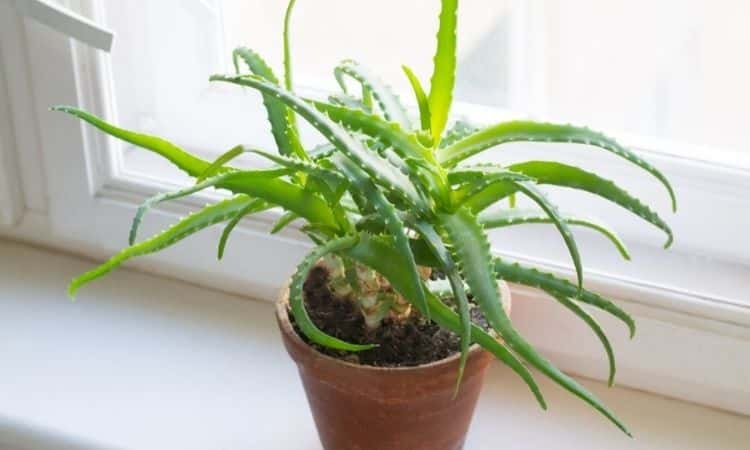
Propagating aloe vera from seed
Propagation by seed is somewhat more complicated. If you do not yet have a mother plant from which to take pups, you can still grow the aloe vera from seed. The best time for sowing is from May when the days are longer again and there is more light.
To do this, the seeds can be placed in a small pot on moist soil and lightly pressed in so that the upper part still protrudes from the soil. The pot can then be covered with a sheet of glass or plastic wrap – creating a mini-greenhouse that will help the seeds germinate better.
The pot is best kept in a warm place such as the windowsill, the ideal germination temperature of aloe seeds is around 77 °F. Occasionally, the lid of the mini-greenhouse should be lifted to prevent fungal attack. After 2 to 4 weeks, the seeds begin to germinate.
Is it possible to plant aloe vera leaves?
A third way to propagate aloe vera is to plant leaf cuttings. This is almost as easy as propagation by the filament. To do this, a sharp knife can be used to cut off one of the outer, healthy leaves of the plant.
Then the aloe vera leaf must be left to air dry for a few days until the cut is dried. The leaf can then be placed about a third of the way into a pot filled with soil and lightly pressed down so that it does not fall over.
Here again a homemade cactus soil or a special cactus and succulent soil are suitable. Finally, the leaf must be watered well, so that the root formation is stimulated.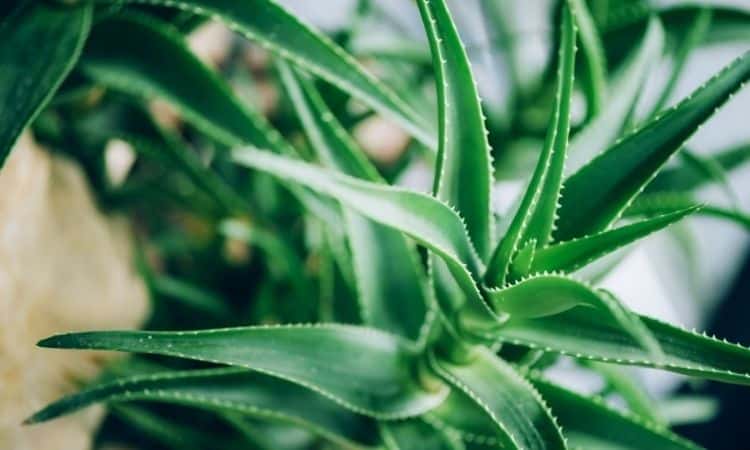
In a warm, sunny place – like the windowsill – the soil should then be kept constantly moist for four weeks: Then the leaf should have grown. From now on, the new plant – just like older aloe plants – can be watered with restraint.
Is the aloe vera hardy?
To maintain the vitality of the aloe vera, it should be overwintered. If the aloe vera stands outside, it should be brought into the winter quarters from September. As a houseplant, it can remain in its location until the end of October but should be brought into the winter quarters even then.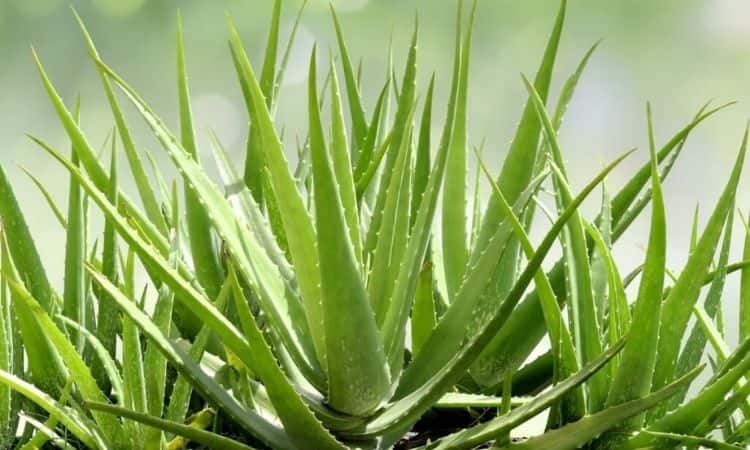
Wintering is best done in a bright room with a constant temperature between 41 and 59 ° F. Winter gardens, bright staircases, or unheated living rooms are best suited. During the winter break, the plant needs less frequent watering.
Fertilization is not necessary. Starting in March, the aloe can be moved to a warmer place. However, it should not be brought outdoors until May, when there is no more frost.
Repotting aloe vera
Like any other potted plant, aloe vera requires occasional repotting as the substrate becomes slumped or depleted of trace nutrients, inhibiting growth. Depending on the age of the plant and the substrate, repotting is necessary about every two to five years.
Good indications that a pot change is needed is when the plant’s growth is reduced, or when the pinnules reach the edge of the pot. If the latter is the case, it is a good idea to repot at the same time as propagation.
First, the old aloe vera is removed from the pot and roughly freed from the soil and dead leaves. Then it can be placed in the new, larger pot. When doing this, the plant should be placed in the soil about as deep as it was before.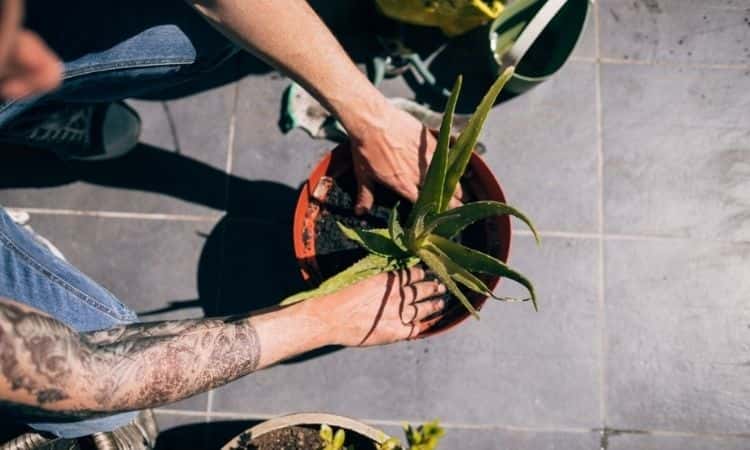
If the lower part is already woody, it can be placed a little deeper. A homemade cactus soil or a special cactus and succulent soil are suitable as substrate.
Especially with large plants, it is advisable to additionally support the aloe with wooden sticks until it has re-anchored itself in the soil – otherwise, the heavy plant can quickly topple over.
Harvesting and using aloe vera
If you want to use the true aloe as a medicinal plant, you can harvest the leaves regularly. Especially the ingredients of the gel-like plant juice have a widely proven, positive effect on our skin.
Two- to three-year-old plants are best suited, where the leaves can be cut off at the base of the stem with a clean knife. You should always leave enough leaves on the plant to allow it to recover. Because the cuts can turn an unsightly brown color, it is best to use leaves that are down.
To catch and dispose of the slightly toxic sap running from the cut, the leaves should be placed upright in a container, if possible. After “bleeding”, you can cut the leaves in half lengthwise and remove the aloe vera gel with a spoon. In addition to using the gel as a home remedy, aloe vera is now found in numerous cosmetic and medical products such as nasal sprays as a moisturizer.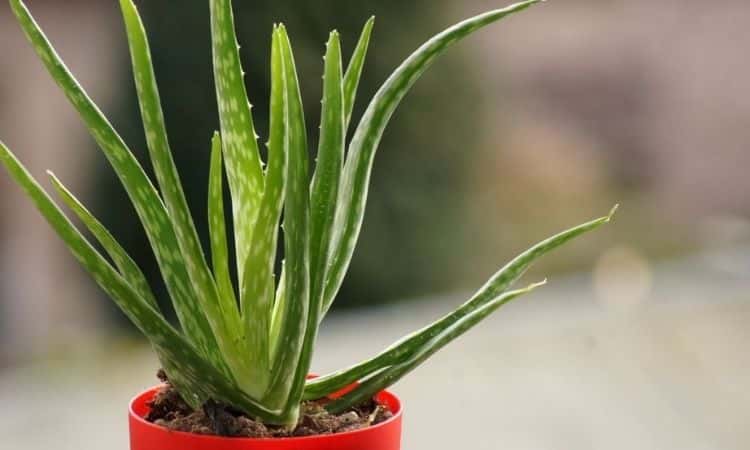
Aloe vera juice is also often used as a food, although we generally advise against consuming ornamental plants – because whether aloe vera is toxic or beneficial to you depends mainly on how it is processed.
Aloe vera plant cutting
A care cut is not necessary for the aloe vera. If you want to keep your plant in shape so that it does not grow too large or too expansive, you can cut off the outer, old leaves if necessary. Also sick or damaged leaves should always be removed.
If you want to use the aloe vera as a medicinal plant, you should harvest the outer leaves regularly to use the gel. Plants older than three years are particularly suitable for this purpose – their leaves are larger and more vital than those of younger plants. They have more gel, recover better from harvesting, and form new leaves faster.
Aloe vera turns brown: What to do?
Sometimes the leaves of the aloe vera brown, grayish-violet or pale can discolor. There may be different reasons for this: when the outer, older leaves turn brown, there is no reason to worry. The plant develops further, repelling the older leaves and forming new ones inside.
Sometimes, immediately after repotting, the leaves also discolor – this is no problem either. The aloe vera only needs some time to grow in the new substrate, then the discoloration disappears by itself.
If the aloe vera has not been reported for a long time, there may be a nutrient deficiency in the old substrate, so that the leaves turn brown. The plant is then supplied with nutrients again by a timely repotting.
A reddish to brownish coloration can be a reaction to too much direct sun, as the aloe vera can protect itself in this way. If the leaf tips become dry, it is time to bring the aloe vera to a less sunny location. After a short time, the leaves will again take on their strong, green color.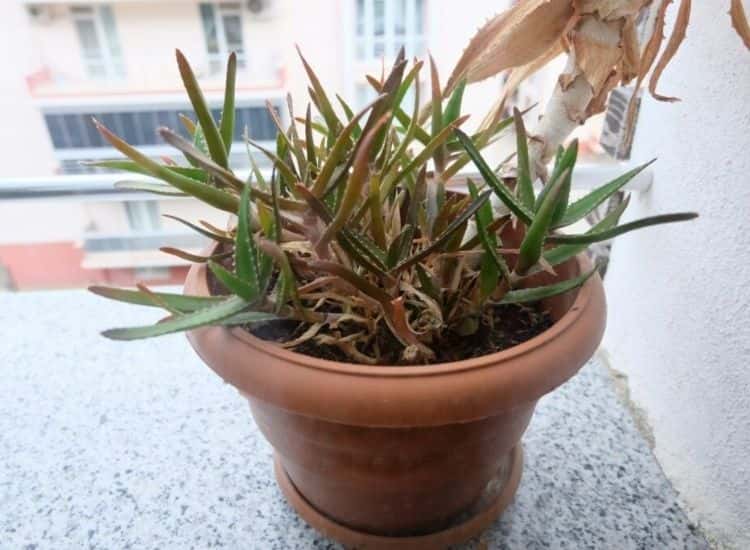
It is more problematic if none of the problems described above can be identified and fixed. Especially if the inner, younger leaves also turn brown or yellow, this can be an indication of too much water. The aloe vera is able as a succulent to store large amounts of water in its leaves but tolerates waterlogging very poorly. At the latest when the aloe–vera– leaves become soft, if you press them a little between the fingers, dam water should be poured away and the watering should be stopped completely for one to two weeks. Discolored, soft leaves can be cut off and disposed of because they provide a good attack surface for fungi.
You Might Also Like Do You Water Aloe Vera From Top or Bottom?
The most common reasons for brown leaves on the aloe vera:
- Growth: Young leaves come after, old leaves can be removed.
- Repotting: Sometimes the aloe vera becomes brown immediately after repotting, fine roots must first be formed, then the aloe becomes vital again by itself.
- Old substrate: There are no nutrients left in the substrate, the aloe vera should be repotted soon.
- Too much sun: If the aloe vera is in the direct sun for too long, brown leaves can occur as sun protection. It should be moved to a sunnier location.
- Waterlogging: If too much is poured, the leaves can turn brown and soft. The watering should be completely stopped for 1 to 2 weeks so that the root bale can dry. Attention: Danger of rot and fungal infestation.
Healing properties of aloe vera
The aloe vera has been known as a medicinal plant since ancient times. It is also widely used as a home remedy and helps with ailments such as skin problems. For this purpose, the gel-like plant juice can be applied to the affected skin area and rubbed.
It has a cooling effect, relieves itching, and moisturizes the skin. The cleansing and moisturizing effect of the plant is particularly known for sunburn and acne as well as neurodermatitis, but the plant is also said to help with dandruff and hair loss.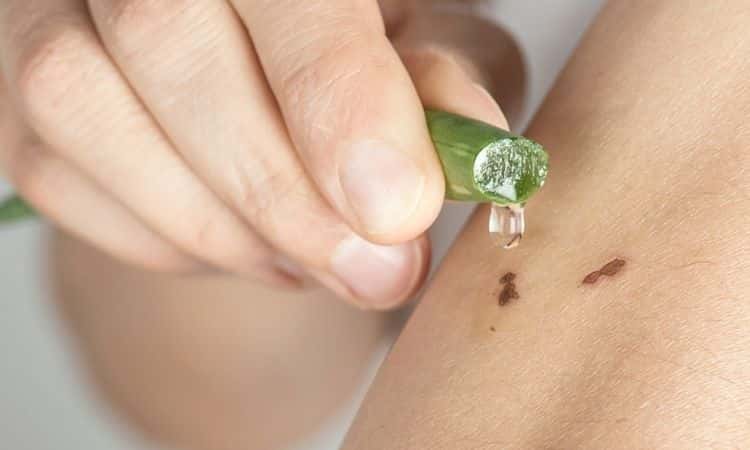
Whether aloe vera can actually help against inflammatory skin diseases, for example, neurodermatitis and psoriasis have not yet been proven in any meaningful scientific study. Aloe vera is considered to be basically “wound healing” and can supposedly help with gastrointestinal problems – but these applications are also based more on hearsay than on stab-proof evidence.
The internal use of aloe is rather to be enjoyed with caution: Aloe vera juice contains the substance aloin, which can lead to diarrhea, irritation of the gastrointestinal tract, and disturbances of the electrolyte balance in case of overdose.
The aloin-free gel can relieve non-specific irritation symptoms in the gastrointestinal tract, but should never be taken without medical supervision. If you want to use the self-made aloe gel internally, you must carefully wash off the poisonous juice containing aloin. Aloe products purchased in stores are safer: In these, the toxic ingredients have been removed.
Preserving aloe vera gel
After harvesting the aloe vera, the gel can be preserved. The untreated gel should only be stored in the refrigerator for a maximum of two days before it is consumed.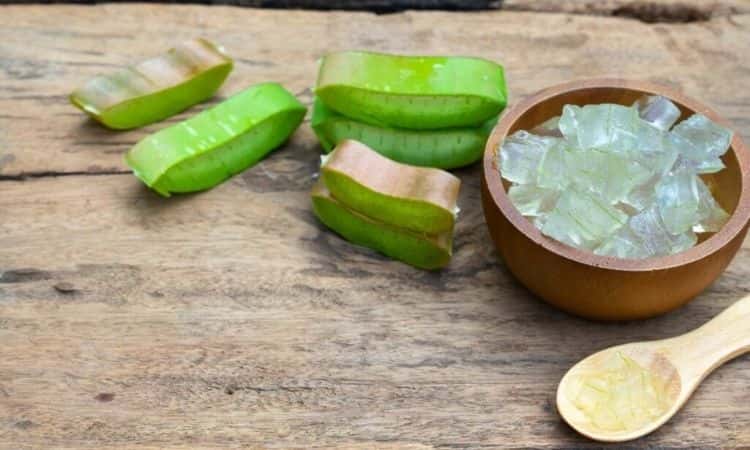
The simplest and most effective way is freezing: To do this, simply place the aloe gel in an ice cube mold in the freezer – this way, you can have handy portions at any time. Alternatively, you can also add natural preservatives, such as vitamin C, to the gel.
Have you acquired a taste for succulents? Read also our overview of the 10 most beautiful flowering succulent species.
